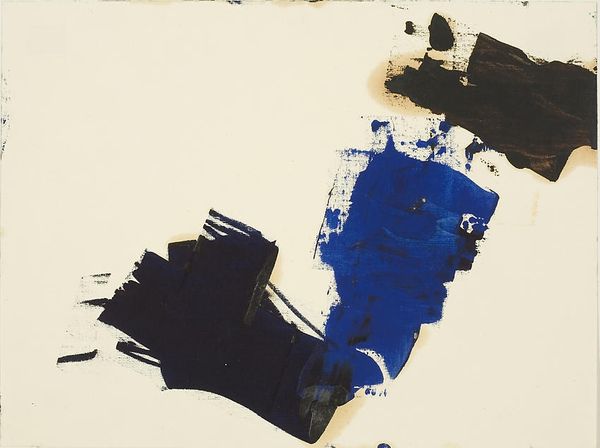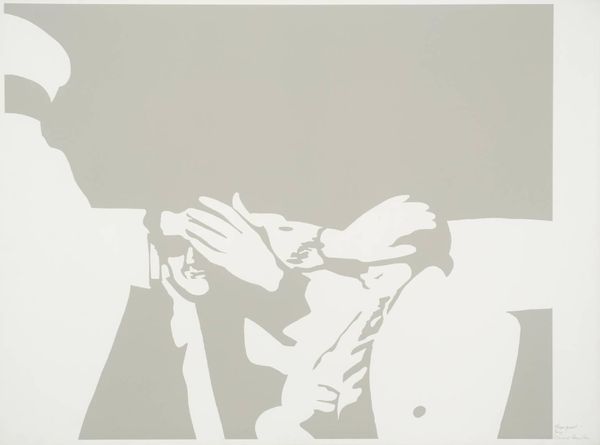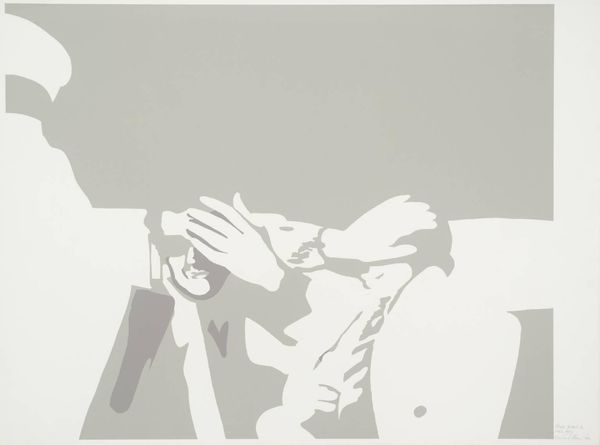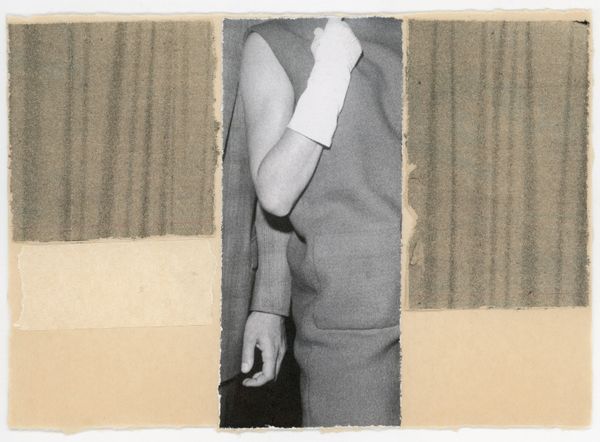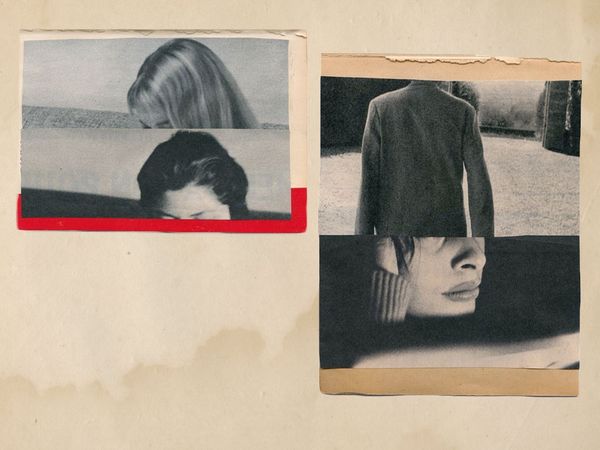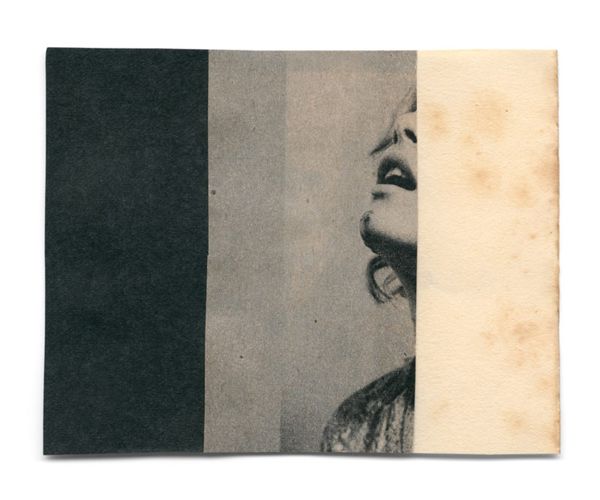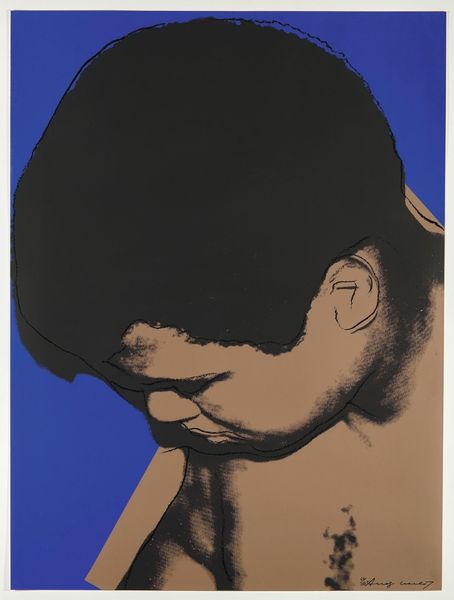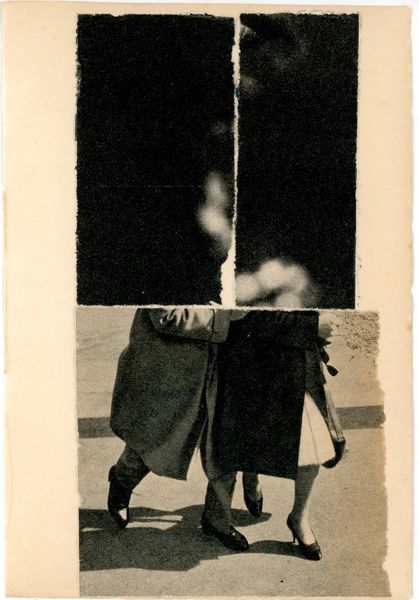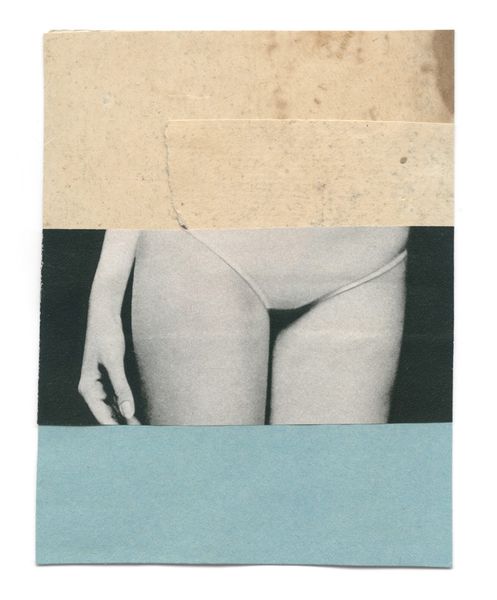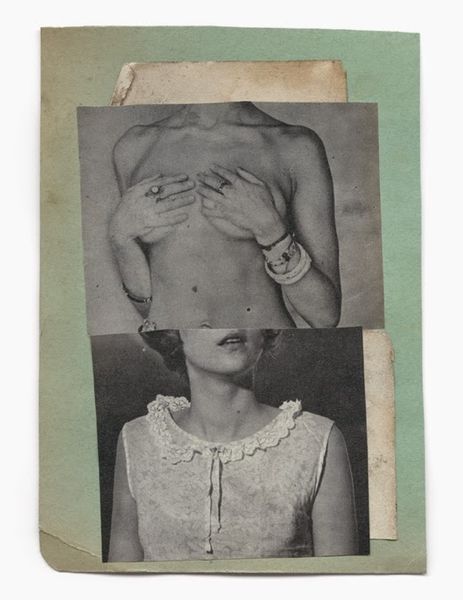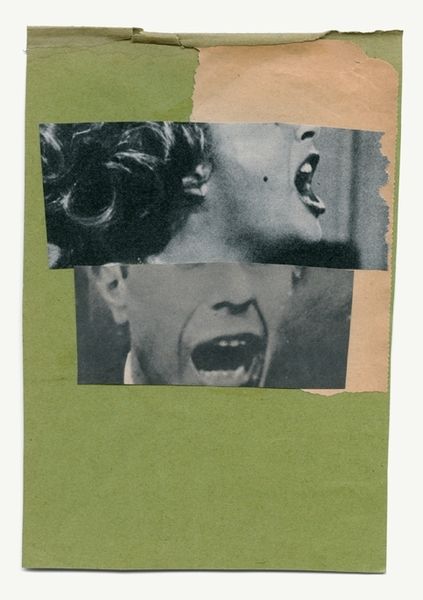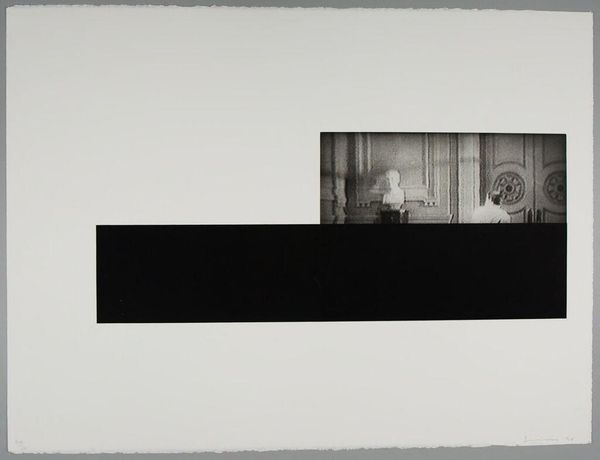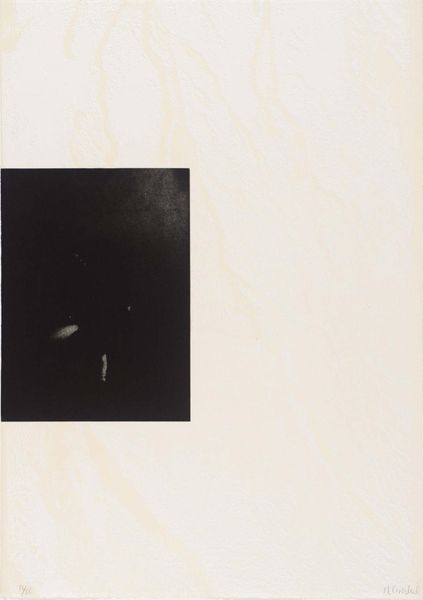
mixed-media, performance, photography
#
portrait
#
mixed-media
#
performance
#
conceptual-art
#
charcoal drawing
#
photography
#
portrait drawing
Copyright: Helena Almeida,Fair Use
Editor: Here we have Helena Almeida's "Inhabited Painting" from 1975, a work incorporating photography, charcoal, and paint. The bold blue stroke obscuring a figure's face is quite striking. What story do you think the artist is telling with this particular choice of materials and gesture? Curator: Well, let's consider Almeida's broader practice. Her work often interrogates the relationship between the body, space, and the act of artistic creation. The mixed media is key. She's not simply presenting a photograph; she's actively intervening, layering meaning through manual application of paint. This pushes against traditional ideas of photography as objective documentation. Editor: So, you see the added paint as more than just a visual element? Curator: Exactly. The aggressive blue stroke calls attention to its own materiality, to the labor involved in its application. What is the paint hiding? Is it erasure, a claiming of the space, or something else? Think about the social and political context in Portugal at the time. The Carnation Revolution had just occurred. Did it challenge traditional values and norms around representation, labor, and what a painting could be? Editor: That makes me think about how the painting is ‘inhabited,’ both by the subjects in the photograph and also, symbolically, by the artist through her active intervention. Curator: Precisely! She's not passively recording, she's actively shaping the narrative. By using photography and also including drawing she puts the high and the low in relation with each other. Also think about where this artwork might have been produced? Her home, perhaps? Is this a photograph that she took herself or used from another source? These material considerations really emphasize labor as well as its interplay with broader social themes, like what the role of an artist can be. Editor: I hadn't considered the context of artistic labour so explicitly. Looking at that deliberate brushstroke and thinking about the political background, it gives me a totally different perspective. Curator: These kinds of considerations lead us to question art historical classifications and power dynamics.
Comments
No comments
Be the first to comment and join the conversation on the ultimate creative platform.

